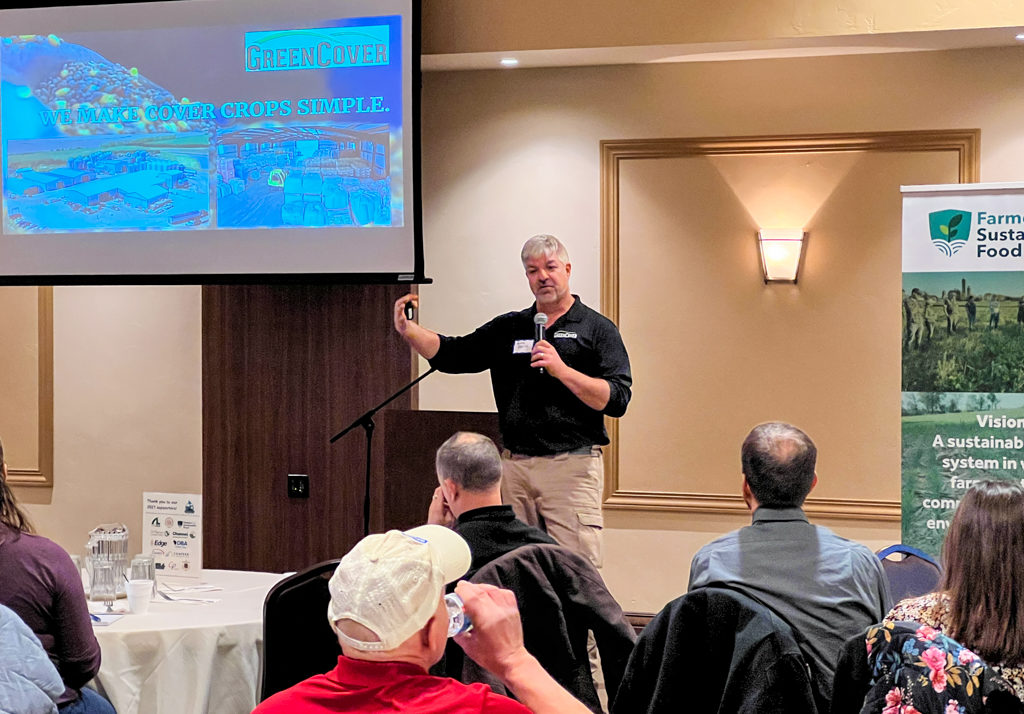
Sheboygan River Progressive Farmers (SRPF) members learned about the many ways cover crops improve soil health and water quality at the farmer-led group’s annual meeting.
Nearly 50 attendees at the Feb. 18 meeting heard from cover crop experts and crop industry specialists on improving farm conservation practices and programs farmers can get involved in.
Questions to ask when thinking about post-harvest cover crops include, “What are your goals for this cover crop?” Keith Berns, co-owner and sales manager of Green Cover, said. “By answering the ‘why’ it will help determine what species will go into your mix.”
Berns has experimented with over 100 cover crop types and mixes through his seed business. He provided numerous examples of what a farmer’s “why” could be, including boosting the biology of the soil, erosion prevention, weed control, nitrogen fixation, nutrient cycling and availability, beneficial and pollinator insect habitat and forage, compaction and infiltration issues or supplemental forage.
One of the many goals Berns helps farmers with is erosion prevention. He is a firm believer that having his ground covered is the best policy.
“We don’t like to see our soil unless we are looking for it,” Berns said. “If we can see it, then so can the water and wind, and it can be washed and blown away to places that we don’t want it to be.”
Berns shared that cover crops are the perfect opportunity to have great plant diversity. By using his free online SmartMix calculator, farmers have the opportunity to play with different cover crop mixes based on their zip code, temperature and farm goals.
Continued growth is a common theme in the Sheboygan River region. SRPF has grown from 25 farmer members to 31 from its inception in 2018. Steve Richter, director of agriculture strategies for The Nature Conservancy (TNC), shared the SRPF 2021 member survey results. The practice of planting cover crops has nearly doubled since 2018, having 7,288 acres covered by 29 of the SRPF members. No-till planting has grown from 1,938 acres in 2018 to 9,634 this year. These practices are continued progress in keeping the soil in the fields.
Michael Patin, Natural Resources Conservation Service (NRCS) district conservationist, informed attendees on NRCS programs that farmers will be able to participate in. Some of these programs give farmers the opportunity to receive an annual rental rate for three to five years. The sign-ups for many of the programs have various deadlines with the first being March 11. Farmers can contact the Plymouth USDA office to find out more information.

